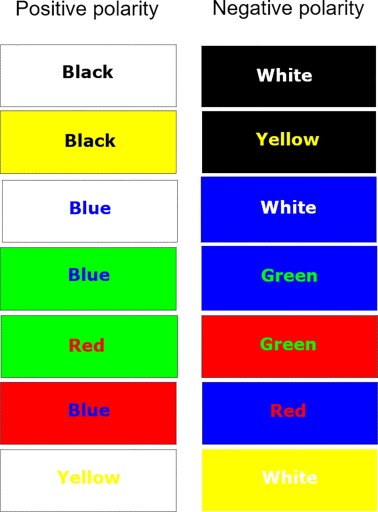
### Exploring Chromostereopsis: A Curious Depth Illusion
Picture a straightforward image: a blue iris embedded in a red eye. To many, this may seem quite typical—merely a flat depiction with contrasting hues. However, for some individuals, this identical image generates an astonishing visual effect: a remarkable illusion of depth, where the blue and red elements appear to be positioned at varying distances from the observer. This phenomenon is termed *chromostereopsis*, and it’s a captivating optical occurrence that elicits surprisingly diverse reactions among different people.
#### What Is Chromostereopsis?
Chromostereopsis is defined as a visual trick where specific colors, primarily red and blue, seem to exist at different distances from the observer, even in a two-dimensional image. It presents a fascinating challenge to our depth perception.
For a subset of viewers, as they gaze upon the vibrant colors, the red sections might give the impression of being nearer or more a part of the scene, whereas the blue sections seem to retreat further away. The intensity of this illusion can vary according to environmental elements—such as screen luminescence, background lighting, or the frequency of blinks. In essence, this experience is not uniform across all observers, but for some, it can be immensely striking.
#### Why Does It Happen?
The precise mechanisms driving chromostereopsis remain somewhat elusive, but there are several scientific explanations for its occurrence:
1. **Wavelength Variations**: Red and blue light occupy different positions on the visible light spectrum, resulting in distinct wavelengths. Red light has a longer wavelength, while blue light sports a shorter one. Consequently, our eyes process these colors differently at the retina—the light-sensitive layer at the rear of the eye. This difference in focus may lead to varying perceptions of depth, with red often appearing closer than blue to the majority of people.
2. **Challenges with Our Visual System**: Chromostereopsis is a stereoscopic phenomenon, meaning it relies on input from both eyes to produce a depth illusion. While stereoscopic effects typically involve two slightly different images shown to each eye, chromostereopsis occurs with just one image. It is your brain that interprets this discrepancy in color depth, creating the illusion that parts of a 2D image are situated at differing distances.
3. **Influence of Luminance**: The difference between the vibrant colors and their background also plays a crucial role. For instance, observing the image in a low-light setting, as some users have noted, can enhance the effect. Our visual system is affected by the surrounding atmosphere, which interacts with the contrast between hues like red and blue in surprising ways.
#### Variation in Perception Among Individuals
One of the most intriguing (and occasionally exasperating) aspects of chromostereopsis is that perceptions of it can vary significantly among individuals. Some might immediately recognize a profound depth illusion, while others may perceive only the colors in a flat presentation—just static hues on a page or screen.
For those who perceive the depth illusion, its intensity can differ greatly. You might find ways to amplify the illusion under particular circumstances (e.g., blinking quickly, tweaking screen brightness, or lowering ambient light). The illusion can even temporarily “fade” for brief moments, only to reemerge with a sudden—and at times disconcerting—clarity.
Additionally, individuals may vary in their perception of colors concerning depth. For many, red appears to be nearer, or “on top,” while blue appears more distant. However, a small fraction of the population may experience this in reverse. If you belong to this minority, blue could seem to extend outward, while red appears further back.
#### A Stereo-Depth Illusion
Stereo-depth illusions like chromostereopsis are typically based on simultaneous input from both eyes. This phenomenon underscores the complexity with which our visual systems translate color and depth from the raw data received by our eyes. Think about how 3D movies function, using special glasses to differentiate images per eye, creating a depth illusion on a flat surface—chromostereopsis accomplishes something akin to this without requiring any additional equipment. It showcases our brain’s remarkable ability to integrate two images—one from each eye—into a unified perception of depth.
Interestingly, you can even verify this effect by closing one eye. With one eye shut, the illusion disappears, reinforcing that it is indeed a stereo-illusion reliant on binocular vision (the coordination of both eyes). This accounts for why individuals with stereo blindness—who are unable to combine visual information from both eyes—do not experience the depth illusion.
#### Practical Uses and Artistic Implications
While chromostereopsis may appear to be a quirky optical phenomenon, it’s a concept that has been unwittingly utilized in art, design, and even film. Over the centuries, artists have harnessed bold and contrasting colors—especially reds and blues—to evoke a sense of depth or highlight certain aspects of their creations. From ancient stained glass in churches to contemporary cinematic visuals,